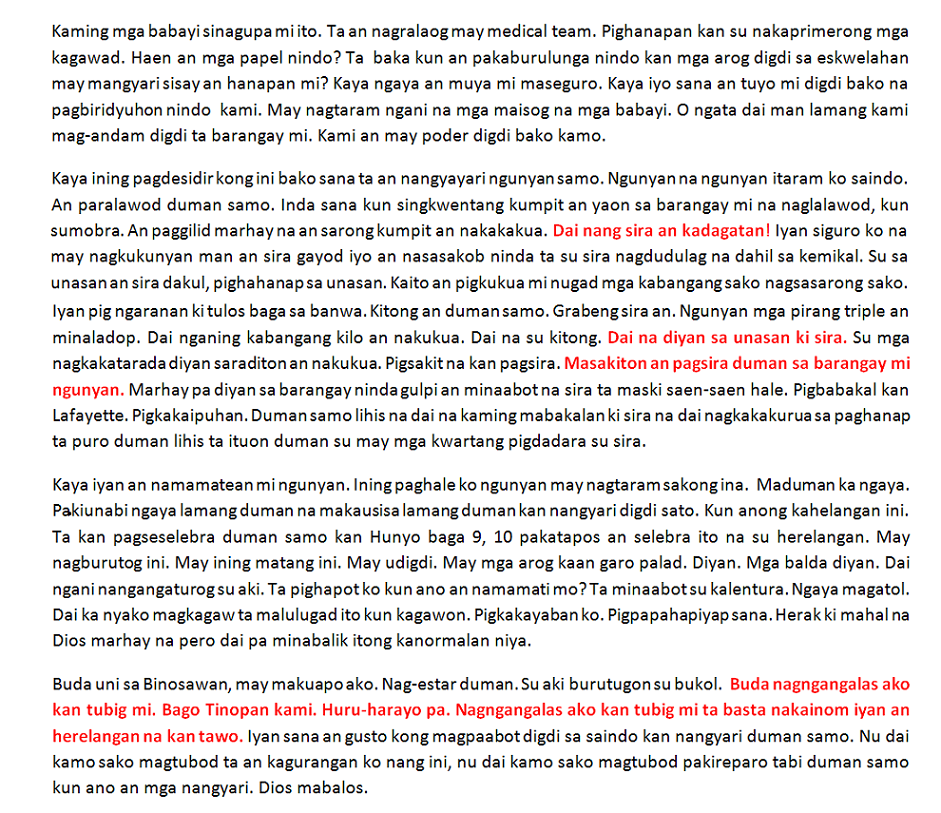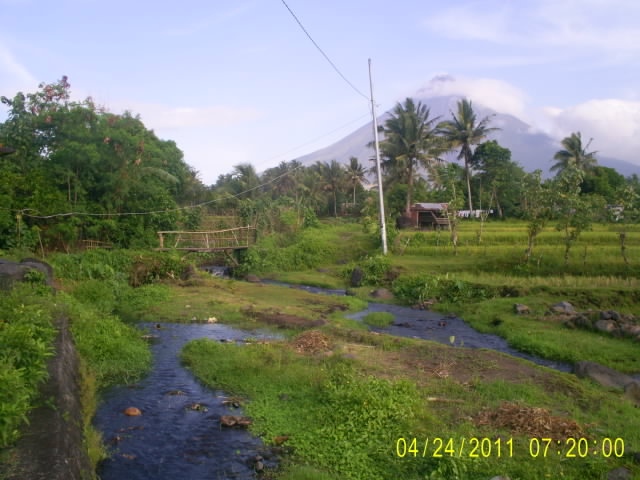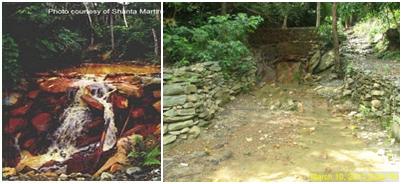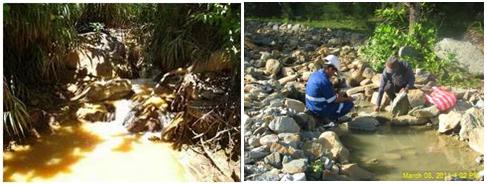You read it right: the DENR is "strongly urging" an LGU not to ban open pit mining. I haven't read as much contradiction, and revelation on the current mining-frenzied state of the DENR, than on this single article. More contradictions:
1. "The environment secretary allayed fears of groups opposing the project that open pit mining will cause irreparable damage to the environment."
2. "...mining is temporary and will not mean permanent loss of the land for other purposes."
3. "Disallowing the use of open pit as a mining method, therefore, means leaving a number of potentially high- profit mineral deposits that can absorb the environmental and social costs of modern mining in the ground, unable to generate the economic and social benefits that can be derived from them."
4. "In the same letter, Atienza cited the Department of Justice in its Opinion No. 8, series of 2005, declared its position that moratoriums against mining contravene the Philippine Constitution."
5. "The letter argues that the Code will contravene the Mining Act and its Implementing Rules and Regulations which did not impose any prohibition on any mining method that may be used but instead ensures that all potential environmental and social impacts are managed during and beyond the life of the mine, he added."
6. "Atienza further pointed out that the Philippine Mining Act of 1995 and its IRR shares the government vision of sustainable development when it enshrined the “principles of sustainable mining”. It was supplemented by Executive Order No. 270, otherwise known as The National Policy Agenda in Revitalizing Mining in the Philippines issued in January 16, 2004 by President Gloria M. Arroyo which promotes “responsible mining for sustainable development,” he said."
Responsible mining, sustainable development, sustainable mining - when will this madness end? How long will the government cause the suffering of its people in exchange for short-term and personal gains?
Philippine News Agency
Friday, June 06, 2008
GENERAL SANTOS CITY, June 6 (PNA) –- Environment and Natural Resources Secretary Jose L. Atienza, Jr. wants local leaders in South Cotabato to reconsider a proposal to ban open pit mining in the province.
A press statement from the Department of Environment and Natural Resources Region XII Office cited a letter where the environment secretary is “strongly urging” South Cotabato officials to reconsider a provision in a proposed environment code of the province.
In a letter to South Cotabato governor Daisy Avance-Fuentes and vice-governor Eliordo U. Ogena, Atienza said that “open pit mining is a legitimate mechanized mining method which is accepted worldwide and is considered the best mining technology in extracting large, low grade, near surface, flat-bedded or massive mineral deposits.”
Atienza chairs the Minerals Development Council (MDC) which is tasked to oversee the proper and sustainable development of the country’s mineral resources.
South Cotabato, particularly in the town of Tampakan , hosts Sagittarius Mines, Inc. (SMI) which is eyeing to tap a world class, two billion-ton resource that contains about 11.6 million tons of copper and 14.6 million ounces of gold at a 0.3 percent copper cut-off grade.
The DENR press statement said open pit mining appears to be the likely method that would be employed when the gold-copper project, starts full mining operations next year.
The environment secretary allayed fears of groups opposing the project that open pit mining will cause irreparable damage to the environment.
He said that similar to any development activity, the environmental impact of open pit mining can be managed or remedied with modern technology, systems and practices.
In terms of land use, mining is temporary and will not mean permanent loss of the land for other purposes.
In addition, Atienza said that unlike most industries, the location of the mineral deposit that will be mined is not guided by free choice nor conditioned by proximity to markets but dictated by the imperatives of geology.
Disallowing the use of open pit as a mining method, therefore, means leaving a number of potentially high- profit mineral deposits that can absorb the environmental and social costs of modern mining in the ground, unable to generate the economic and social benefits that can be derived from them.
It should also be mentioned, he explained, that the production of construction materials or aggregates like marble, sand and gravel and cement raw materials utilizes open pit mining or surface mining.
In the same letter, Atienza cited the Department of Justice in its Opinion No. 8, series of 2005, declared its position that moratoriums against mining contravene the Philippine Constitution.
While the Code will not expressly impose a moratorium on mining in South Cotabato , it has the same practical effect because it will prohibit a method that may be the only feasible way of mining and quarrying for the Province, Atienza said.
The letter argues that the Code will contravene the Mining Act and its Implementing Rules and Regulations which did not impose any prohibition on any mining method that may be used but instead ensures that all potential environmental and social impacts are managed during and beyond the life of the mine, he added.
Atienza further pointed out that the Philippine Mining Act of 1995 and its IRR shares the government vision of sustainable development when it enshrined the “principles of sustainable mining”.
It was supplemented by Executive Order No. 270, otherwise known as The National Policy Agenda in Revitalizing Mining in the Philippines issued in January 16, 2004 by President Gloria M. Arroyo which promotes “responsible mining for sustainable development,” he said. (PNA)
LOR/RGR
































































































































No comments:
Post a Comment